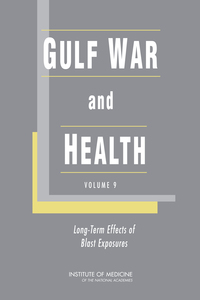The Institute of Medicine (IOM) released Gulf War and Health: Long-Term Effects of Blast Exposures on February 13, 2014. VA had asked IOM to review the medical and scientific evidence regarding exposure to blast and health effects. VA is assessing the report to determine whether there will be any changes to its policies.
 Released: February 13, 2014
Released: February 13, 2014The wars in Iraq and Afghanistan are known for the enemy’s reliance on improvised explosive devices (IEDs). It’s estimated that explosive weaponry accounts for 75 percent of all US military casualties. Since 2001, more than 1,000 US soldiers in the Afghanistan war have been killed in action and nearly 10,000 wounded in action – causing a variety of injuries – because of IEDs. From March 2003 to November 2011, more than 2,000 US soldiers in the Iraq war were killed in action and close to 22,000 wounded in action due to IEDs.
Concerned about the long-term health effects of exposure to blast, the Department of Veterans Affairs asked the IOM to assess the relevant scientific information and to draw conclusions regarding the strength of the evidence of an association between exposure to blast and health effects. The IOM’s report makes recommendations for future research on the topic. visit for report>>>























No comments:
Post a Comment